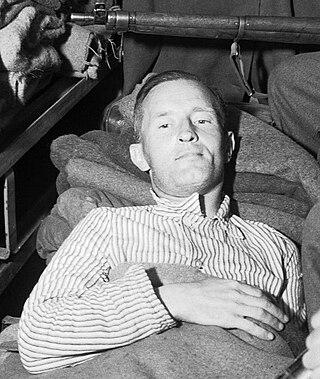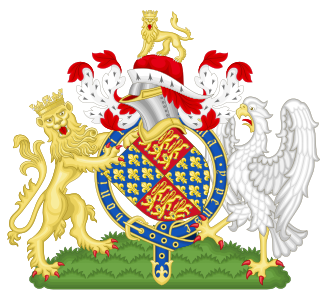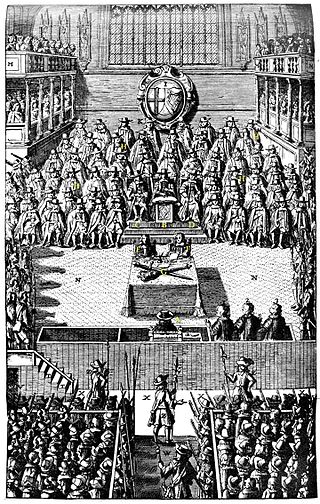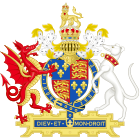The Act
The Act made it treason, punishable by death, to disavow the Act of Supremacy 1534. Sir Thomas More was executed under this Act. It was introduced as a blanket law in order to deal with the minority of cases who would refuse to accept Cromwell's and Henry's changes in policies, instead of using the more traditional method of attainders.
The Act specified that all those were guilty of high treason who:
do maliciously wish, will or desire by words or writing, or by craft imagine, invent, practise, or attempt any bodily harm to be done or committed to the king's most royal person, the queen's or the heirs apparent [Elizabeth], or to deprive them of any of their dignity, title or name of their royal estates, or slanderously and maliciously publish and pronounce, by express writing or words, that the king should be heretic, schismatic, tyrant, infidel or usurper of the crown...
The word 'maliciously' was added in several cases to require evil intent, and the Act meant that it was very dangerous to say anything against what the King had done. The Act also made it treason to rebelliously keep or withhold from the King his castles, forts, ships, or artillery, and to fail to surrender any of them within six days of being commanded to do so. It also abolished sanctuary for those accused of high treason.
The Treasons Act 1534 was repealed by the Treason Act 1547.

Henry VIII was King of England from 22 April 1509 until his death in 1547. Henry is known for his six marriages and his efforts to have his first marriage annulled. His disagreement with Pope Clement VII about such an annulment led Henry to initiate the English Reformation, separating the Church of England from papal authority. He appointed himself Supreme Head of the Church of England and dissolved convents and monasteries, for which he was excommunicated by the pope.

Sir Thomas More, venerated in the Catholic Church as Saint Thomas More, was an English lawyer, judge, social philosopher, author, statesman, amateur theologian, and noted Renaissance humanist. He also served Henry VIII as Lord High Chancellor of England from October 1529 to May 1532. He wrote Utopia, published in 1516, which describes the political system of an imaginary island state.

The dissolution of the monasteries, occasionally referred to as the suppression of the monasteries, was the set of administrative and legal processes between 1536 and 1541, by which Henry VIII disbanded Catholic monasteries, priories, convents, and friaries in England, Wales, and Ireland; expropriated their income; disposed of their assets; and provided for their former personnel and functions.
In English history, the penal laws were a series of laws that sought to uphold the establishment and State decreed religious monopoly of the Church of England against illegal and underground Catholics and Protestant nonconformists by imposing various forfeitures, civil penalties, and civil disabilities upon recusants from mandatory attendance at weekly Anglican Sunday services. The penal laws in general were repealed in the early 19th century during the process of Catholic Emancipation. Penal actions are civil in nature and were not English common law.
The Acts of Supremacy are two acts passed by the Parliament of England in the 16th century that established the English monarchs as the head of the Church of England; two similar laws were passed by the Parliament of Ireland establishing the English monarchs as the head of the Church of Ireland. The 1534 Act declared King Henry VIII and his successors as the Supreme Head of the Church, replacing the Pope. This first Act was repealed during the reign of the Catholic Queen Mary I. The 1558 Act declared Queen Elizabeth I and her successors the Supreme Governor of the Church, a title that the British monarch still holds.

Under the law of the United Kingdom, high treason is the crime of disloyalty to the Crown. Offences constituting high treason include plotting the murder of the sovereign; committing adultery with the sovereign's consort, with the sovereign's eldest unmarried daughter, or with the wife of the heir to the throne; levying war against the sovereign and adhering to the sovereign's enemies, giving them aid or comfort; and attempting to undermine the lawfully established line of succession. Several other crimes have historically been categorised as high treason, including counterfeiting money and being a Catholic priest.

The Oath of Supremacy required any person taking public or church office in the Kingdom of England, or in its subordinate Kingdom of Ireland, to swear allegiance to the monarch as Supreme Governor of the Church. Failure to do so was to be treated as treasonable. The Oath of Supremacy was originally imposed by King Henry VIII of England through the Act of Supremacy 1534, but repealed by his elder daughter, Queen Mary I of England, and reinstated under Henry's other daughter and Mary's half-sister, Queen Elizabeth I of England, under the Act of Supremacy 1558. The Oath was later extended to include Members of Parliament (MPs) and people studying at universities. In 1537, the Irish Supremacy Act was passed by the Parliament of Ireland, establishing Henry VIII as the supreme head of the Church of Ireland. As in England, a commensurate Oath of Supremacy was required for admission to offices.

The Ecclesiastical Appeals Act 1532, also called the Statute in Restraint of Appeals, the Act of Appeals and the Act of Restraints in Appeals, was an Act of the Parliament of England.

The Act of Supremacy 1558, sometimes referred to as the Act of Supremacy 1559, is an Act of the Parliament of England, which replaced the original Act of Supremacy 1534, and passed under the auspices of Elizabeth I. The 1534 Act was issued by Elizabeth's father, Henry VIII, which arrogated ecclesiastical authority to the monarchy, but which had been repealed by Mary I. Along with the Act of Uniformity 1558, the Act made up what is generally referred to as the Elizabethan Religious Settlement.

The Forty Martyrs of England and Wales or Cuthbert Mayne and Thirty-Nine Companion Martyrs are a group of Catholic, lay and religious, men and women, executed between 1535 and 1679 for treason and related offences under various laws enacted by Parliament during the English Reformation. The individuals listed range from Carthusian monks who in 1535 declined to accept Henry VIII's Act of Supremacy, to seminary priests who were caught up in the alleged Popish Plot against Charles II in 1679. Many were sentenced to death at show trials, or with no trial at all.

The Treason Act 1351 is an Act of the Parliament of England wherethrough, according to William Blackstone, common law treason offences were enumerated and no new offences were, by statute, created. It is one of the earliest English statutes still in force, although it has been very significantly amended. It was extended to Ireland in 1495 and to Scotland in 1708. The Act was passed at Westminster in the Hilary term of 1351, in the 25th year of the reign of Edward III and was entitled "A Declaration which Offences shall be adjudged Treason". It was passed to clarify precisely what was treason, as the definition under common law had been expanded rapidly by the courts until its scope was controversially wide. The Act was last used to prosecute William Joyce in 1945 for collaborating with Germany in World War II.

The Act Respecting the Oath to the Succession was passed by the Parliament of England in November 1534, and required all subjects to take an oath to uphold the Act of Succession passed that March. It was later given the formal short title of the Succession to the Crown Act 1534.

The English Reformation Parliament, which sat from 3 November 1529 to 14 April 1536, established the legal basis for the English Reformation, passing major pieces of legislation leading to the break with Rome and increasing the authority of the Church of England. Under the direction of King Henry VIII of England, the Reformation Parliament was the first in English history to deal with major religious legislation, much of it orchestrated by, among others, the Boleyn family and Thomas Cromwell. This legislation transferred many aspects of English life away from the control of the Catholic Church to control under The Crown. This action both set a precedent for future monarchs to utilize parliamentary statutes affecting the Church of England; strengthened the role of the English Parliament; and provided a significant transference of wealth from the Catholic Church to the English Crown.

An Act extinguishing the authority of the bishop of Rome was an Act of Parliament passed by the Parliament of England in 1536. It consisted mostly of a violent attack on the authority of the Pope and his followers, and declared that those who committed the following offences would be liable for prosecution under the Statute of Praemunire 1392:

The High Court of Justice was the court established by the Rump Parliament to try Charles I, King of England, Scotland and Ireland. Even though this was an ad hoc tribunal that was specifically created for the purpose of trying the king, its name was eventually used by the government as a designation for subsequent courts.

The Treason Act (Ireland) 1537 is an Act of the former Parliament of Ireland which adds several offences to the law of treason in Ireland. It was repealed in the Republic of Ireland in 1962.

The Succession to the Crown Act 1707 is an Act of Parliament of the Parliament of Great Britain. It is still partly in force in Great Britain.
The English Protestant Reformation was imposed by the English Crown, and submission to its essential points was exacted by the State with post-Reformation oaths. With some solemnity, by oath, test, or formal declaration, English churchmen and others were required to assent to the religious changes, starting in the sixteenth century and continuing for more than 250 years.

The Treason Act 1543 was an Act of the Parliament of England passed during the reign of King Henry VIII of England, which stated that acts of treason or misprision of treason that were committed outside the realm of England could be tried within England. Those convicted of high treason would have their estates confiscated by the King and then be hanged, drawn and quartered.

The Royal Assent by Commission Act 1541 was an Act of the Parliament of England, passed in 1542, which attainted Queen Catherine Howard for adultery, thereby authorising her execution. It also provided that all of Queen Catherine's assets were to be forfeited to the Crown while also creating a new method in which royal assent could be granted to legislation.













